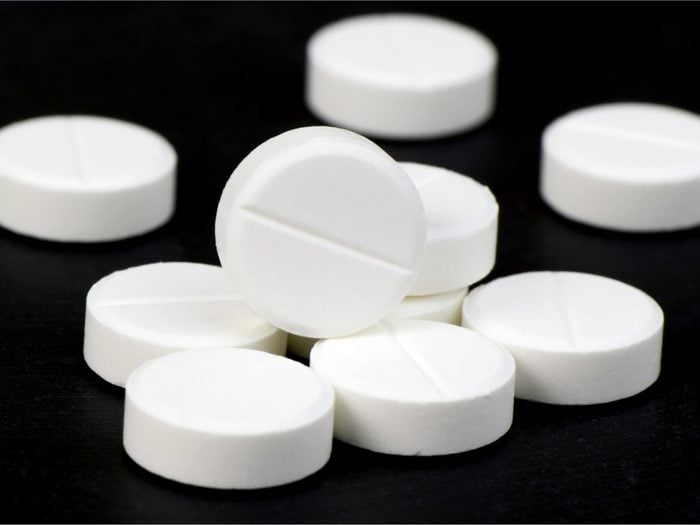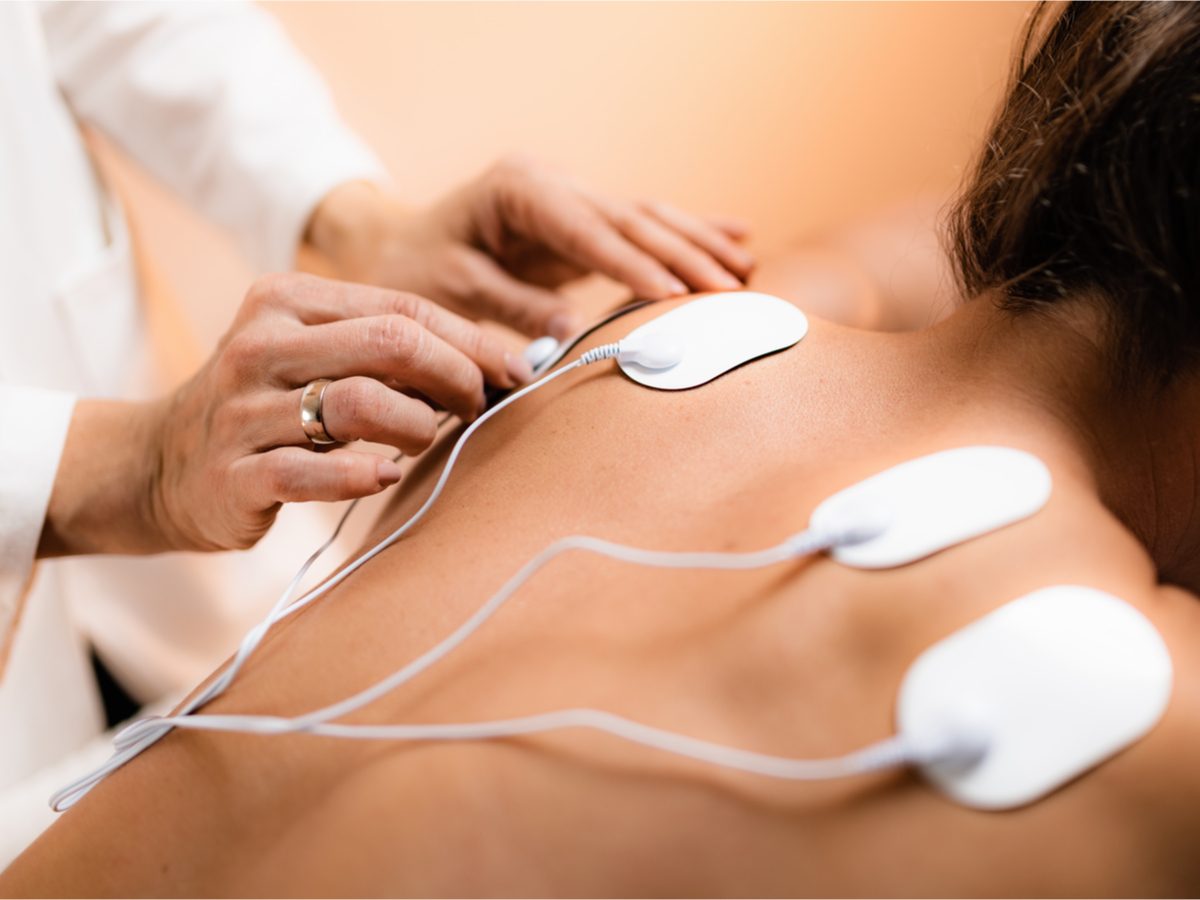
Suffering From Everyday Aches and Pains? These Pain Management Tips Can Help
Accepting a life with pain isn’t something that comes naturally to most people. Ever since a 1986 car accident, Keith Meldrum has experienced severe discomfort in his abdominal wall, hip and back. The 50-year-old engineer in Kelowna, B.C., used to try to push through it: “For a long time, I wanted to show myself and the world that I was not going to let my injury hold me back.” But when he would overdo it with activities that ratcheted up the intensity of his pain, like playing baseball or even signing up for Canadian Armed Forces training, he’d often end up in the hospital.
Finally, 16 years ago, Meldrum’s doctor referred him to a health care team that specialized in pain and had expertise in self-management techniques. It was a turning point, he says. “I stopped fighting and started putting my energy into living the best life I could.”
About one in five Canadians lives with chronic pain, or pain that stays after a typical healing period of 12 to 16 weeks. But those agonies that everyone experiences at some point—a bad toothache or menstrual cramps—can be just as debilitating.
Now, when Meldrum feels pain flaring up, he’ll pause and take the edge off by spending five, 10 or even 60 minutes performing deep, focused breathing to relax muscle tension and lower stress. “I can dial the worst of the pain back down,” he says. This is just one of several methods he relies on to keep moving and healthy.
Here are 11 pain management strategies that’ll help you take the battle with pain into your own hands—and win.

Over-the-counter medications for everyday aches and pains
Acetylsalicylic acid (ASA), which has been on the market since 1899, was the world’s most popular painkiller by the mid-twentieth century. Acetaminophen became available in 1950, and today it ranks as the most widely used medication, full stop. Both drugs work by changing the message of the chemical transmitters that travel up our spinal cord and tell our brain we’re hurting. As they lead to the least harmful side effects of all painkillers and can help a range of aches, it’s best to give them a try before turning to anything stronger—unless, of course, your doctor has advised you to avoid these products because of a medical condition such as liver disease or a bleeding disorder.
Ibuprofen, which is a nonsteroidal anti-inflammatory drug (NSAID), is chemically similar to ASA but carries more serious risks, including kidney damage, high blood pressure and gastrointestinal bleeding. You should check with your physician before using it, especially if you’re over 65 or have certain medical conditions like diabetes or high blood pressure. (Learn to spot the symptoms of diabetes you might be ignoring.)
Be wary of combination products, like those that contain acetaminophen plus a muscle relaxant. The more ingredients a medication has, the greater the risk it could interact with something else you’re already taking. “Read the labels and tell the pharmacist what you’re also on,” suggests Dr. Tom Evans, a physician and co-founder of the Atlantic Pain Clinic in Moncton, New Brunswick.

Prescription drugs for everyday aches and pains
Kennedy Aragon-Scriven, a 22-year-old undergraduate from the University of British Columbia, badly hurt her tailbone as a teen while horsing around with classmates. The nerve pain that now radiates down her legs can make them feel like they’re on fire, and a dose of aspirin doesn’t put it out. “I spent a lot of time hoping that the next doctor I saw would give me the magic bullet,” she says.
In addition to sticking to a stricter sleep schedule and using a special cushion for sitting, for the past year, Aragon-Scriven has been getting help from gabapentin, in a group of anticonvulsant drugs that also includes pregabalin. These are often used for pain that arises from damage to the nervous system—such as a severed nerve, chemotherapy side effects or shingles.
NSAIDs are also available in prescription-strength formulas, if over-the-counter medications don’t do the trick. (Some people need the stronger NSAIDs for menstrual pain, for instance, or to ease the sore joints of osteoarthritis.) Since various options act on different groups of those pain transmitters, it may take some trial and error to find one that helps you.

Cannabis
Medical cannabis has been earning more attention as a potential pain reliever, although research is still limited and it isn’t yet recommended as a first-line treatment. University of Guelph biologists are currently working on a way to engineer stronger versions of cannabis’s anti-inflammatory molecules. “I think there’s a place for this in the market for people who are looking for alternatives to treat their pain that don’t have the negative health effects of other drugs,” says Tariq Akhtar, a professor of molecular and cellular biology. His team is working with industry partners and anticipates they might have a product for sale within two years.
In the meantime, many people are experimenting on their own. Statistics Canada noted in 2018 that more Canadians are using cannabis at older ages and pointed to pain management as a reason why. Check with your doctor, though, before putting cannabis to the test.

Cognitive-behaviour therapy
Since pain is highly unpleasant, the emotional impact of it can be just as distressing as the physical sensation. Strategies that work on controlling this response—cognitive-behaviour therapy (CBT) being a key one—can improve how we feel, says Douglas French, a co-founder and psychologist at the Atlantic Pain Clinic. “Pain and suffering are not the same thing. You can reduce suffering and learn to function better, despite pain.”
For example, it can be helpful to be more aware of your negative self-talk. Stress and anxiety are proven to worsen physical pain. Instead of berating yourself for being able to clean only half the kitchen floor, you can be more compassionate: “This is the best I can do today without overdoing it.” An expert in CBT can help you change your thought patterns by learning to reinterpret these kinds of situations. Last year, a research review at the University of Utah concluded that CBT and other mind-body therapies can reduce pain severity in people on opioids. In the majority of the studies they looked at, opioid use also went down.

Topical relief
For pain problems that are near the skin surface—like an arthritic joint in your big toe, a nerve injury in your fingertip or a bad sunburn—medicated creams or gels (usually containing a topical anaesthetic or NSAID) may provide some relief. Heat or cold packs may soothe deeper musculoskeletal pain, as well. “Don’t use high heat, because you don’t want to burn the skin,” cautions Dr. Ashley Esdaile, a family physician and pain specialist in Thornhill, Ontario. “Same thing with too much cold—don’t leave it on the skin more than 15 minutes or so.”
“If I have a headache, I put ice on my neck and a hot cloth on my forehead,” says Wendy Collum, a 68-year-old former employment consultant in Edmonton. In addition to migraines that can strike multiple times a month and leave her incapacitated by head and face pain, Collum has fibromyalgia—a condition in which pain signals are ramped up by the nervous system. She applies a variety of pain management techniques. “I’ve gone through a lot of trial and error,” she says.
Finding traditional hot water bottles too bulky? In 2019, graduate students at the University of Toronto designed Undu, an ultra-flat model that can be worn against the abdomen, inside of your clothing, to treat menstrual pain.
Find out the best home remedies to relieve foot pain.

Acupuncture
Acupuncture, derived from a 2,500-year-old traditional Chinese practice, can treat a wide range of everyday conditions, including backaches and dental pain. Tiny needles are inserted through the skin to various depths and are thought to disrupt pain signals by stimulating the nerves. Evidence is mixed, although a 2017 analysis in The Journal of Pain found it does seem to help certain individuals beyond the placebo effect. It usually takes a few sessions to see any effects, and as with many treatments, it’s not easy to predict who will benefit from it.
Melanie Klos, physiotherapist and owner of the Corydon Physiotherapy Clinic in Winnipeg, believes acupuncture is worth trying for the majority of people who come to her with any type of pain. “It is a fairly safe modality, so there’s minimal risk.”

Injections
Spinal nerve blocks—injections of a long-lasting anaesthetic into vertebrae joints—can help with some types of back pain. But, like so many other treatments, it depends where the soreness is coming from. This won’t relieve disc pain, for instance, but can help with pain in the facet joints connecting your vertebrae.
Dr. Esdaile often treats her chronic headache patients with nerve blocks in areas around the head. Another option is botulinum toxin, which can prevent migraines by infiltrating the nerve endings and blocking their transmission of pain signals. Steroid injections into inflamed joints can sometimes help with arthritis pain. All of these offer only temporary relief for most people, lasting anywhere from weeks to months, so they need to be repeated.
Here are the best exercises to relieve arthritis pain.

Nerve stimulation
Spinal cord stimulation (SCS) can override your pain signals by sending electric impulses to the spinal cord through surgically implanted wires. It doesn’t work for all pain, but it may help some kinds of back or limb pain. Meldrum wasn’t sure what to expect when he first tried SCS in 2005, almost two decades after his car accident. “Within 24 hours, I noticed something was different,” he recalls. His pain was still there, but muted.
There are risks to this kind of invasive procedure—a battery could leak, or you could develop an infection. Even if it works perfectly, the hardware doesn’t last forever. Meldrum’s technology wore out five years ago, and his surgeons haven’t been able to replicate the effect, despite follow-up surgeries to move the electric leads. Meldrum has been approved for a more targeted form of stimulation, in Canada only since 2018, that will be delivered directly to the nerve-root bundle.
A less invasive option, transcutaneous electrical nerve stimulation (TENS), delivers a low-voltage electric current through the skin. TENS devices are widely sold for use at home or in a health care provider’s office. Some studies suggest TENS can sometimes reduce the sensation of pain in certain disorders like shoulder tendonitis, endometriosis and lower backache by interfering with the nerve signals. It’s also used by some women in labour. But you shouldn’t use it if you have a pacemaker or medical conditions like epilepsy or deep vein thrombosis, so it’s best to talk to your physician before trying it.
Check out more medical innovations coming to a hospital near you.

Physical activity and physiotherapy
There are multiple ways that regular physical activity can ease your everyday aches and pains. It improves your emotional well-being, triggers the release of endorphins, and boosts blood flow and nutrients to your joints and tissues. It also keeps you in shape. “If you don’t use it, you lose it,” says Klos. (Here’s what happens to your body when you start walking 10,000 steps a day.)
If you’re worried about aggravating your pain or putting pressure on your joints, try gentle walking or low-impact exercises like tai chi or aquatics. Yoga can improve your balance and strength, but get expert guidance from a physiotherapist to make sure the positions don’t cause you harm. “You can modify that movement instead of just pushing through it,” says Klos. A physiotherapist can often suggest specific exercises to do at home that will help you heal or improve your mobility—if, for instance, you’ve had a recent sports injury or are recovering from surgery.
Meldrum used to deal with severe pain flare-ups by lying on the couch for days until they passed. “Now, I move, even if it’s just to take the dog out for a long walk.”

Meditation and relaxation
The University of Utah research review found that mindfulness meditation was among the most effective mind-body therapies for reducing intensity of pain. Relaxation practices like meditation can reduce tension in the body, calm the sympathetic nervous system and provide a greater sense of control. Specific techniques, such as focusing on your breathing, progressively relaxing different muscles or visualizing a peaceful place, may take some training at first; the websites of many pain management organizations list step-by-step guidelines.
While in hospital, Meldrum was given a recording with instructions for the breathing techniques upon which he now relies. He was skeptical at first, and admits, “I almost left it there.” But once he tried it, he was hooked. “My wife can tell when the pain is coming, and she will breathe with me and help me relax.”
For some people, music or essential oils can help with relaxation. What’s important is finding what works for you. “I have a quiet space where I go, and I don’t put music on,” says Collum. “I just like the silence.”
Here’s what can happen when you start meditating every day.

Massage
Therapeutic massage can ease everyday aches and pains by improving circulation and helping your body relax. It may also reduce the anxiety that aggravates pain. Some research suggests it can be effective for soft tissue injuries, back pain, headaches and fibromyalgia pain. Seek out a registered massage therapist who is specifically trained to address injuries. “Massage is the one thing that has been consistently the most helpful over the last 20 years,” says Collum. “Even if I only get relief for an hour or two, that’s an hour or two without pain that I wouldn’t have had otherwise.”
Meldrum encourages other Canadians dealing with pain to explore self-management strategies. “Never give up hope. Find what works for you,” he says. “But instead of focusing on the pain and allowing it to be everything, focus on the things in your life that are meaningful to you. It makes it easier to get through the rough days.”
Now that you’re armed with these tips on managing everyday aches and pains, find out 20 symptoms you should never ignore.